Powerslide is a popular method of slowing down your longboard. A powerslide is accomplished by turning the longboard slightly to the side while in momentum, causing the wheels to brake or skid to a halt. After mastering how to stop properly, you may try a powerslide. A frontside powerslide occurs when the skaters turn forward and slide the longboard with their back foot, whereas a backside powerslide occurs when the skaters rotate their body in the opposite direction and slide the longboard with their rear foot.
What You Need for Powersliding
1. Heelside slide
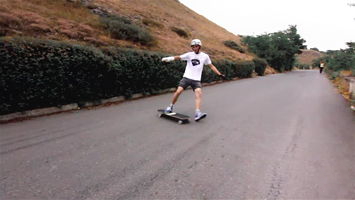
Heelside slide is sometimes referred to as frontside slide since the front of the skater’s body faces the trajectory of movement. Beginners make mistakes in heelside slides by extending their legs and bending too far backward. Keep your knees bent to avoid this and to help you to slide longer. As you slide, imagine that there is a chair directly behind you. Simply sit on that chair, and you’ll be able to maintain a heelside skid as long as your motion permits.
2. Toeside slide
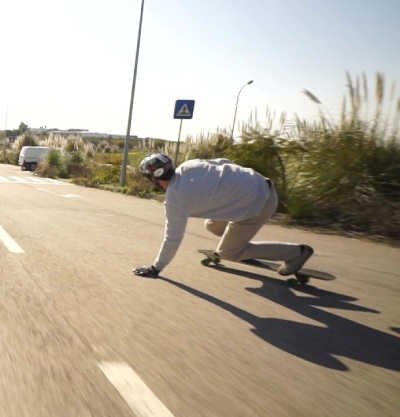
The opposite of a heelside slide is a toeside slide. You can’t dive into a toeside slide like you can into a heelside. You must lean further out beyond the longboard, and you’ll be considerably taller than in a heelside slide. The trick to remaining balance is to twist your shoulders in the direction you’re sliding. Maintain the front foot firm and the back foot light. In a toeside slide, most skaters are up on the heels of their back feet, while their lead foot stays straight on the longboard.
3. Stand-up slide
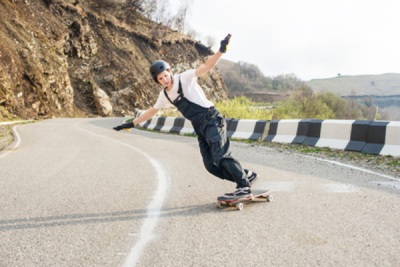
You do not place your hand on the surface when doing stand-up slides. You force the wheels to lose traction by carving forcefully and pressing your longboard out. You then maintain your balance on your longboard as it slides across the ground. To recover traction, you adjust your weight and enable the longboard to grip up, allowing you to turn quickly. The most stunning type of sliding is the stand-up slide, but it is also the most difficult and dangerous.
4. 180 slide
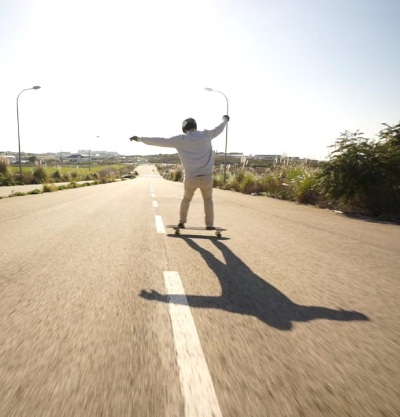
This is most likely the easiest stand-up longboard slide around, and because of that, it’s an excellent one to begin as your first stand-up slide. It’s simple to learn at moderate speeds, and it’ll provide you a sense of guiding your wheels without placing your hands on the pavement.
A complete body rotation is accomplished immediately after the slide, leading to changes in posture. A complete 180-degree rotation is completed. In this case, both the shoulders and the hips work together to rotate. You do not return to your regular position after the 180 stand-up slides. Instead, you complete the slide in a shift, with your opposing foot in front.
5. Coleman slide
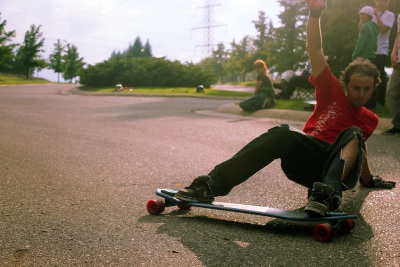
A Coleman slide requires stooping and putting the lead arm on the pavement, following a heelside slide. It is titled after their creator, famous downhill skater Cliff Coleman. The skater unweights the longboard by stretching out over the ground in Coleman slides. As a result, this slide demand sliding gloves.
Put your hand forward of the front wheels of your longboard and as much out from you as is possible. As you slip sideways, it’ll be behind you. As you lean forward and your arm begins to slide, shift into a heelside slide. Maintain your weight at the front wheels by moving your foot forward and keeping your knees flexed as you slide backward across the road.
6. Pendulum slide
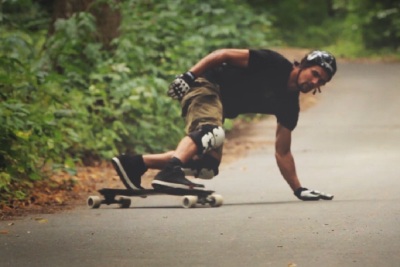
A pendulum slide is a hands-down slide in which you bounce side to side while sliding. It’s a great method to slow down while you’re moving quickly, and it’s frequently the first slide a newcomer learns. It involves using one’s shoulders to assist influence the direction in which the longboard will slide.
7. Sit down slide
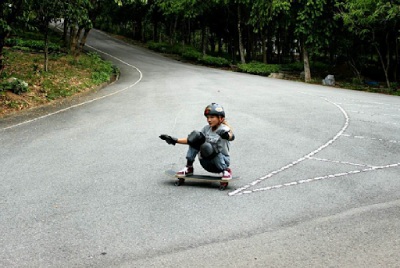
Sit down slides are similar to stand up slides, except that you sit on your longboard while you slide, or just attempt to go as low as you can. In terms of execution, they are quite similar to stand-up slides. They are simple to perform if you have a strong squat and therefore can squat effectively on your longboard.
8. Speed checks
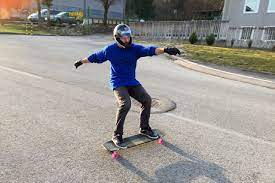
The speed check slide is a less aggressive variation of the stand-up slide. The distinction is in the shoulder position. The shoulders are much more flexible here, as they would be if you were riding the longboard regularly. It differs from the stand-up slide in that you must fully swing your shoulders and body downhill. To return to the usual riding position, the hips need to flex.
How to Perform Frontside Powerslide
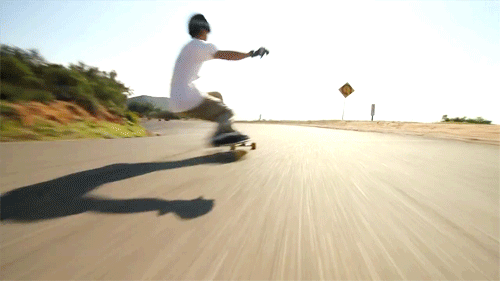
1. Build some movement
Begin by pressing with the other foot to build momentum, then slide your other leg over and behind it. When you’re sliding on a longboard, note that gravity should do all it can to have you slide straight down, therefore if you’re not bending back moderately or maintaining your weight, this should happen.
2. Correct your foot positioning
Place your leg in front of your longboard’s wheels and to one edge, then allow it to slide over until you can press off with the other foot. Usually, this will occur before you begin to lean back or make contact with the surface.
3. Keep your balance
After you’ve finished the slide, you should be able to keep your posture and not tumble backward. The easiest method to accomplish this is to shift all of the weight on your front foot that is currently on wheels and bend back a little more. You may even remove both feet if required. The broader your posture, the more influence you will hold over your longboard. Distribute your weight appropriately to maintain your stance balanced, and avoid placing your front foot too near to the longboard’s tip.
4. Swing and adjust
If you’re not pushing down the longboard with your entire weight, a powerslide is much easier. Flex your knees and raise yourself just enough before sliding to decrease friction between the surface and your longboard. Once you’ve risen somewhat, use your rear foot to pull sideways on the back wheels, causing them to come off straight. You may also have to swing and adjust your feet for the upcoming slide.
5. Slow down
You have two alternatives for slowing down. One option is to simply lean back and utilize your weight for traction by sliding on the longboard with your knees bent. The second alternative is to stop pressing wheels to move them closer so that they are parallel once again. If you’re utilizing a powerslide to decelerate and crossover, make sure you balance the longboard as you go again to its normal skating orientation so you can keep moving.
How to Perform Backside Powerslide
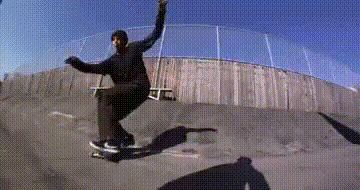
When you’ve mastered the frontside powerslide, it’s time to try the backside powerslide.
1. Build some movement
To do a backside powerslide, you must first acquire momentum. The easiest method to achieve this is to leave a space from one longboard deck’s width to the next so that your feet and body are parallel to each other when you touch down the ground. This will provide you enough room to do two 180-degree rotations.
2. Correct your foot positioning
Make sure your feet are aligned and that the edge of your longboard is facing the opposite way you wish to slide. For example, if you want to perform a left powerslide, position both of your feet on the right end of the longboard deck. If you require an additional push, lift your rear foot off the pavement.
3. Twist and push
Hold your head over the longboard and bend back to generate enough weight to rotate your board when power sliding on a longboard. Turn forward along your slide to view what’s ahead, then rapidly use backward movement to keep going while putting the majority of your weight on your foot.
4. Relax your body
To complete your powerslide, make sure to gently down the longboard with your both feet as you exit it. This will prevent the longboard from shifting and allow for a strong exit.
Safety Tips and Precautions While Performing Powerslides
The powerslide is not really that hard to learn but like with any other sport, accidents are possible. Luckily, there are methods for lowering the risk of injury. Here are a few safety precautions and warnings to keep in mind while you practice the powerslide.
- Wearing safety gear before using a longboard is mandatory, even if you are a skilled skater. Pads are required to protect your elbows, hands, and legs. A high-quality helmet is required to guard your head. Never ride a longboard without your helmet.
- Selecting a practicing site should be done with caution. Look for a practicing location that has a lawn nearby. If you are unable to stop, go after the lawn to limit injury. Concrete pavement may result in more significant injuries than soft terrains, such as grass.
- If you’re a total newbie, exercise in an area with few or no people. Furthermore, avoid crowded roadways at all costs.
- Begin by exercising on a level or shallow incline. Don’t rush to a big slope just yet. Instead, seek out a damp surface.
FAQs
1. Are powerslides harmful to your wheels?
Ans. If you do it frequently, it will undoubtedly damage your wheels. Powerslides are mostly used to slow down extremely fast. You better pick an old set of wheels for practice.
2. Is it possible to power slide on soft wheels?
Ans. Soft wheels provide higher traction and will not slide easily on asphalt. The disadvantage of the powerslide is that flat areas will eventually develop on your wheels, progressively shrinking them.

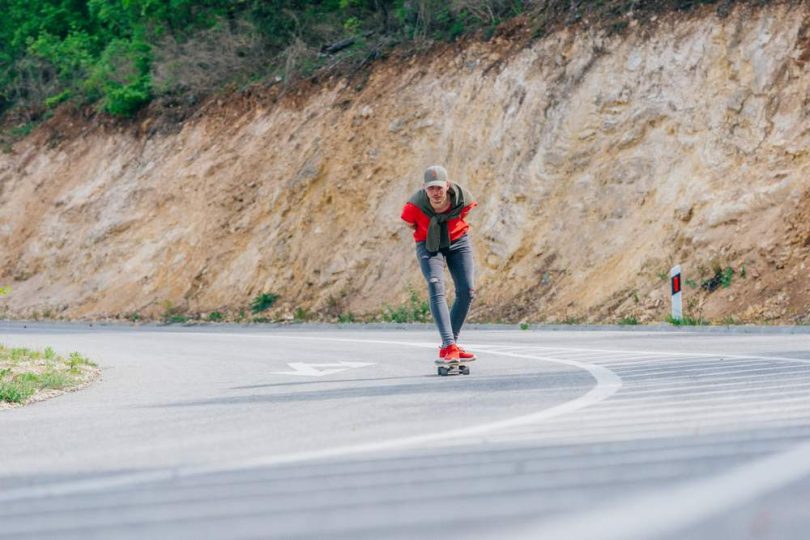
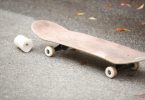
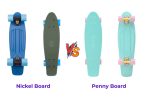
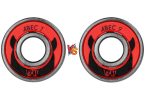
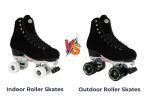
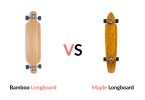
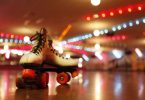

Leave a Comment